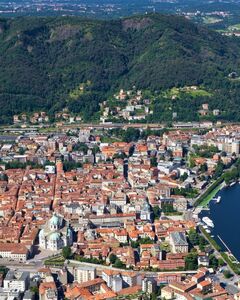
museums near Taurus

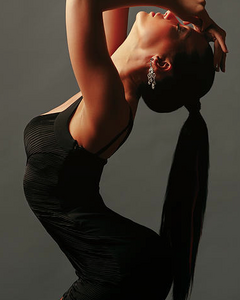
Enjoy the vibe of The Saturday Night... feel the rythm of emotion and let the clubbing engage you....
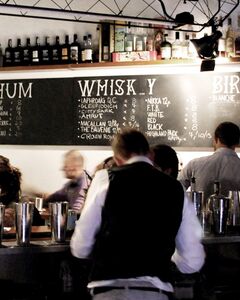
Cocktails born from the love for our area. Flavours ranging from the Alps to the doors of Africa: a fortune that all the world envies....
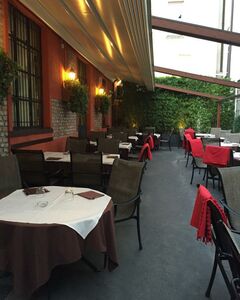
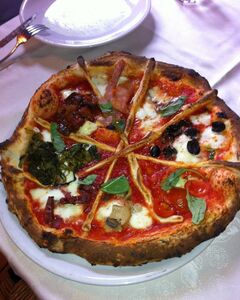

Our Mexican restaurant turned into a meeting place for people from Switzerland from Milan and of course from the Como, for evenings of fun and happiness, animated by dj playing what is called happy music. On Friday and Saturday it is always a big...
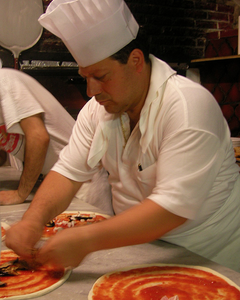
Our kitchen offers the best dishes of the Italian tradition, including recipes based on meat and fish, pasta dishes simple but tasty that fully enhance the flavors of our land. Spaghetti with seafood to the scallops with porcini mushrooms, they are...
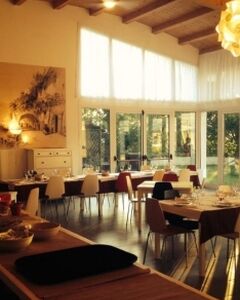
Refreshment Nidrino is an exclusive local Brunate, in the province of Como, which offers excellent menus delighting a great view of the lake. To spend an evening with friends, with family or your loved one, and get away from everyday stress, we...

In 2003 an old mill with about 300 years of history came to life, after a complete renovation. Bahama Mama retains all the charm of the old mill, the warm family atmosphere of tropical colors and original furniture from various parts of the world....
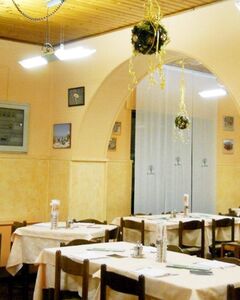
Immersed in the green between the mountains of Valle, in hospitable village of Taceno, "AI PLATANI" with independent entrance is a place where you can spend your time in peace. Ideal for families, a serene environment and family that will make you...

What characterizes Restaurants Elvis is the high standard of its cuisine. All meals are prepared using food of excellent quality. Fresh fish, meat of choice, tasty vegetables all combined with the best traditional Italian wines. The pizzas and the...
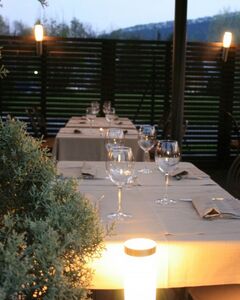
Tiare restaurant, a destination for lovers of seafood, is located in Tavernerio on the road for Lecco, it features a comfortable and spacious parking. Morena, along with his brave staff welcomes guests in a young and innovative consists of an air...


Appreciate the excellent local cuisine as polenta, tripe and pizzoccheri. Acquired an extraordinary experience, the restaurant now offers a wide range of specialty seafood, local dishes and a pizza space, offering an unparalleled value for money....

The concept of churrascaria, spread throughout Brazil starting from its origins in southern Brazil, is one the most sincere expressions in this local tropical flavor. The careful selection of meats and their meticulous preparation for traditional...

Over thirty years, continuing the family tradition in the catering Como. The venue is easily accessible from the historic city of Como, being situated very close to the walled city and one of the main entrances to the latter: Porta Torre. Our...
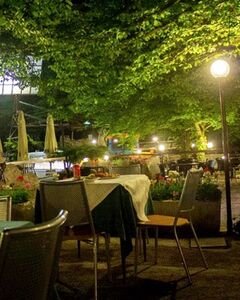
Steakhouse and pizzeria with seating available indoors and out. Check events for live music....

The first pizzeria Como, the renowned "Pizzeria Cavour" around the Lario, owned by the family Bergamaschi Almina in Piazza Verdi. The Russo family has a long tradition in the world of baking from her uncle Gaetano who moved to Como in 1958 and began...

The pizza restaurant The Grill is located in the center of Como, behind the Duomo just left behind the level crossing Ferrovie Nord Milano and crossed the pedestrian crossing. We are a short walk from Palazzo Terragni and a hundred meters from the...
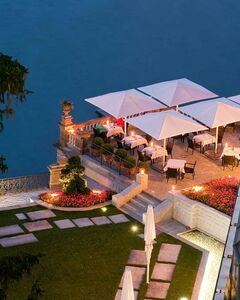
The 'a la carte' Restaurant, "L'Orangerie", offers the true Italian flavors, prepared with particular focus on local traditions: home-made pasta, bread, cakes and desserts; seasonal products coming from the area. Outdoor terrace on the Lake open...

A simple restaurant .... where you will find a family ... on our plates and in our pizza more than 25 years of experience. From Monday to Friday lunch menu 'pizza at 7.5 € and Menu' kitchen to € 9.5 in the evening on Thursday Friday and Saturday...

A simple and welcoming restaurant in Alba con Cassano, Via Mascagni, 24. We are husband and wife originally from Salerno, we have undertaken the task of restoration some years ago ', with a pizza takeaway to , in those years we have gained...

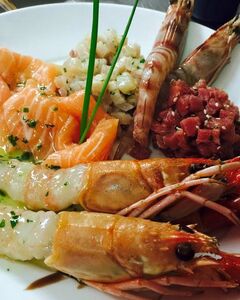

Pizzeria Ermitage da Arturo is located not far from the historic center, a few paces from the stream Cosia and is the oldest pizzeria Como. For over 20 years, housed in a former convent, with 60 seats inside and 90 seats in the garden, is suitable...
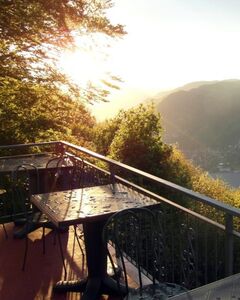
We have always been guided by a single rule: We create dishes that we like and with deep respect for the raw materials, whether of animal or vegetable origin, giving preference to products to zero km or certified organic. we offer you a typical...
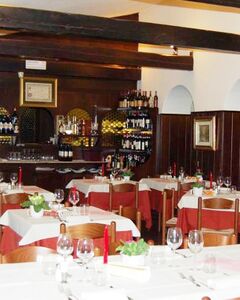
The restaurant boasts a terrace overlooking the lake with breathtaking sunsets and romantic evenings and a kitchen full of passion that Momi, owner and chef, uses as a key ingredient in its dishes. Momi is pleased to welcome in the new restaurant...
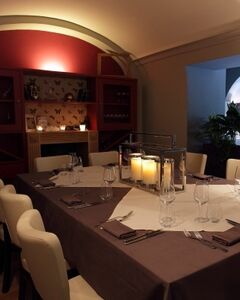
A charming and elegant place, with a stunning view of the Cathedral. You can also enjoy your meal in the indoor garden surrounded by the ancient walls of the city. The menu offers a selection of the best Italian and local products. Also a wine...
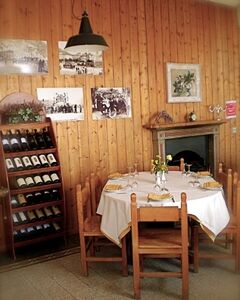
In Brunate (Como, CO), above a wonderful landscape, you can find the "Locanda del Dolce Basilico". In a homely, friendly and relaxed location, you will be able to taste Ligurian and local specialties, made with care and with natural ingredients....
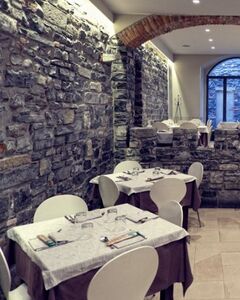
The Locanda Barbarossa opened October 27th of 2004. Situated in the heart of the "Romanesque" old city center of the Town In Como. The structure is entirely in stone of Moltrasio which makes the room absolutely only one. With the same stones,...

Just steps from the beautiful cathedral and the famous Terragni, in the middle of a typical local street of Como.Our commitment and to seek the fresh ingredients for the preparation of our dishes, prepared in compliance with the Italian culinary...

Courtesy and quality are at home and we will offer you a simple, genuine cuisine where raw materials are absolutely seasonal to enhance aromas and flavors now forgotten by most. La Trattoria Rienza, bowling club with a bar and a pergola with vines...

La Pizzaccia offers appealing menus, designed to satisfy your craving for pizza. Large variety also from the point of view of the flour for the preparation of the dough! Come and visit us at our restaurant Via F. Delano Roosevelt in Como. The wood...
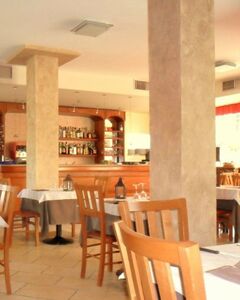
Welcome to the Ristorante Pizzeria Al # 5 in Como where you can find genuine and true kindness....

Located at 6 Via Della Pila, Camnago Volta (Como). The dishes are seasonal, fresh ingredients only and exclusively Italian. We put our heart in every dish to give you a new experience every day. We have a garden where you can eat, drink a cocktail...

A cozy and quaint sushi place in the heart of Lake Como, to make you breathe the magical and oriental atmosphere, taking care of details from furniture to light trying to grasp the essentials and refined Japanese style. Sushi and sashimi very fresh...
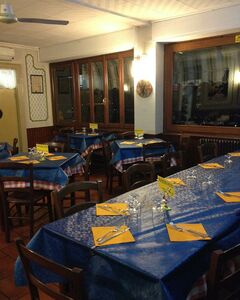
Located a short walk from the Brunate funicular: from Como in just 7 minutes you can enjoy a fantastic view of the lake and surrounding mountains. In addition to the typical local cuisine, we are pleased to present you some courses that complement...
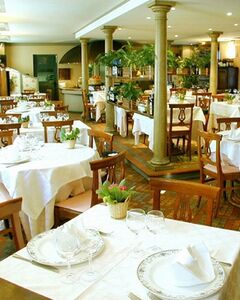
Ristorante Er Piu proposes a broad selection of fish specialities: fish baked in the oven, salted, stewed or in soups... all originating from a well-stocked display case ensuring the quality and freshness of the fish served... Ensuring the quality...

Osteria Antica Molina, since 2009 in an ancient palace of the '600, in the square of Molina (CO), opposite the church of St. Anthony, in a busy crossroads of the ancient Royal Road. Family-run, perfecting the menu, trying to interpret the tastes of...
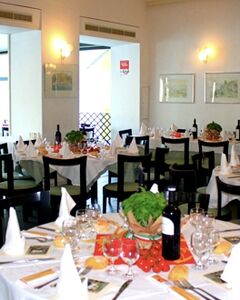
The Hotel Restaurant Fioroni is in Carate Urio, a small picturesque town on Como Lake’s shores. An ideal place to relax and to admire the beauties of the lake. Ristorante Fioroni, has stand out for generations of gourmets from Como and Milan and...


Since the beginning of the last century people came here to enjoy a stay. Bellavista Boutique Hotel and Restaurant is a liberty style building, which has recently been renovated, and is only 50 meters away from the Brunate's funicular. From our...
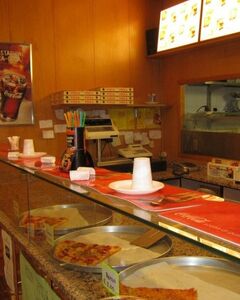
At India Fast Food, we are focused on providing Food services with the highest levels of customer satisfaction – we will do everything we can to meet your expectation. With a variety of offerings to choose from, we’re sure you’ll be happy working...


The simple and welcoming setting is ideal both for romantic and friendly dinners and for formal meetings, enveloped in the magical atmosphere of the lake. Our products are all selected among the best local and foreign producers: tradition across the...
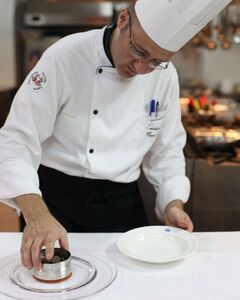
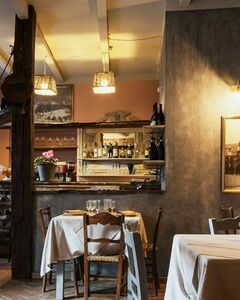
Traditional dishes served in a "one-time", from Casseola to Pizzoccheri a gastronomic journey to discover the flavors Manzoniani. Tira, Mola e Meseda is your point of reference in the Typical Restaurants in Lombardy with the real home cooking. We...

Well reviewed pizzeria using the freshest ingredients and baked in a traditional oven. If in the area, give us a try, you won’t be disappointed!...

Hotel Resort of great charm, built in late Art Nouveau style, which is accompanied by a new wing is linked to rationalism Como, the Ristorante Imperialino looks directly on Lake Como, surrounded by a garden full of greenery. The Imperialino is an...
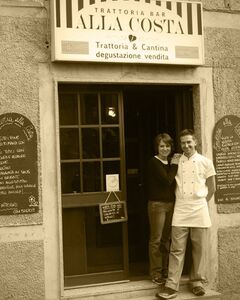
Located along the ridge Bassone, it is more than a family business. Trattoria alla Costa has kept its traditional appeal Lombard cuisine, with its warm inviting dining areas. You must never miss the chance to try the home-made desserts. They are...
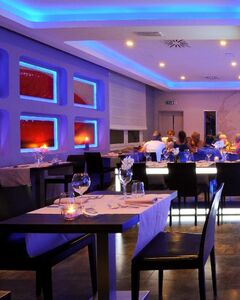
An ideal combination that brings the tradition and flavors of their Mediterranean cuisine in a young and modern keep pace with new innovations. The traditional Mediterranean cuisine presented in a rich and varigato menu, where the daily arrivals,...
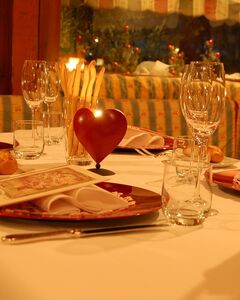
Choose a dinner "à la carte", or opt for a menu "vegetarian", "sea" and alternative - for fans of Lombardy cuisine - "traditional". Special attention is also paid to the choice of wines for an excellent match, right from our own cellars. The...
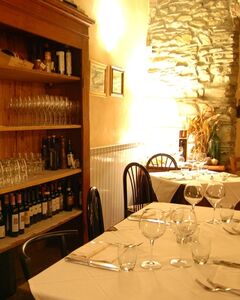
The history of Crotto has ancient origins ... Since the '700 was used as such and, even today, the local preserves the charm of the typical taverns. The cuisine is excellent and offers a constantly changing menu, recipes typically Lombard with...
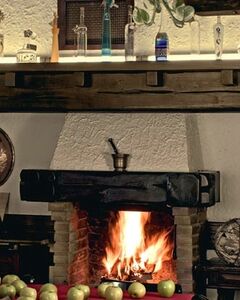
The Restaurant is surrounded by greenery, in a corner of old Brianza. The garden on the banks of the river Lambro invite you to get lost in nature or, in the evening take romantic walks. The dishes combine the ancient origins of the Brianza recipes...
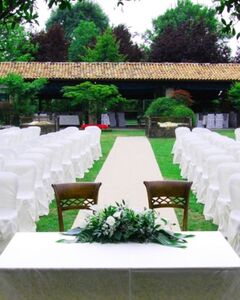
Located in a tiny town, in the municipality of Monticello Brianza, near Lecco. Out of the way of "trade routes", lost among hills and farmland amongst a few old houses. Only one road that unites them with the rest of the world. Today we would say:...
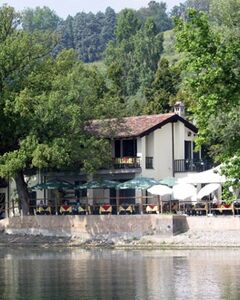
Walking down Via Zoli 27, the oldest and quiet street a few steps from Lake Pusiano, meets the old gate of the restaurant Ellera. Our restaurant serves as Trattoria, Osteria, seasonal Bar, lido and has the possibility to rent bikes and boats....
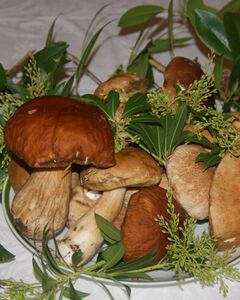
The interior rooms are the classic expression of the typical trattoria of Lombardy, everything points to the flavor of the past, but with an eye to the evolution of taste in the tradition. Away from the clamor, Chef Aurelio delights the loyal...
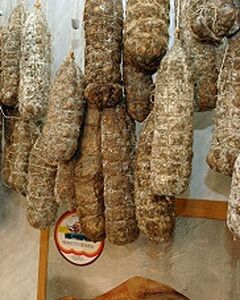
From handmade sausages with tasty and quality meats from Piedmont, each served on the board of the restaurant (and available for purchase in the adjoining butcher shop) comes from a long family tradition of butchers and butchers. To complete the...

Trattoria Il Barzaghin has continued to prepare those dishes that are know as "typical" such as tripe and cassoeula, cooked salami and mortadella liver. Relying on carefully selected raw materials, and drawing from the territory and from artisan...
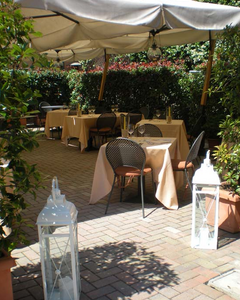
The restaurant is obtained in a structure in the end of XIX century. The structure maintains the original wall and it offers fashionable vaults on brick (within sight of all) a vista. Trattoria La Scaletta in Cantù is composed by a main room with 16...

For over 40 years ,Restaurant Cascina Edvige run by the family Castagna, welcomes guests in a familiar environment. The restaurant, set in an old farmhouse, already in its characteristic entrance, a foretaste of the taste of Brianza tradition. The...

The crotto is located in the hamlet of Pozzo City of Civate in the province of Lecco, in the resort 360 m asl with views of Lake Hanno. Crotto Del Capraio, serves typical cuisine of Lombardy. Specialties include: pizzoccheri, risotto, tagliatelle...

Among intense aromas and flavors of the past, good things homemade, cooked according to original recipes of traditional cuisine of northern Italy. In a warm atmosphere, refined but familiar, where the environment is studied in detail, but has...
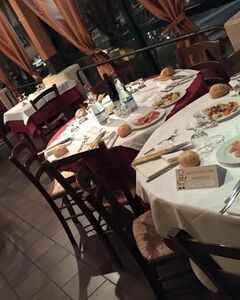
La Trattoria Edda, a warm, friendly dinning experience in the countryside far away from a chaos. Located in Cremnago of Inverigo, Via Roma, 97. La Trattoria Edda, five generations in catering. Mrs. Vittoria Romano Paredi (called Edda), is the owner...
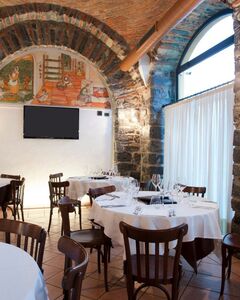
Restaurant, pizzeria, bar but also a place where you can organize meetings, private parties, events, banquets, weddings, christenings, communions, baptisms....

Ristorante Poldo is located on the Piano Del Tivano at a height of 1000 meters, surrounded by greenery and tranquility, surrounded by pastures and woods. It has a large dining room and outdoor terrace where in summer you can dine surrounded by a...
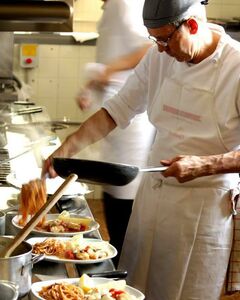
With our wood-burning oven, we try to transfer our passion for quality cuisine to also include making great pizza. We also opened our tables to offer fast food of the South, with a delicious menu whilst maintaining great value....
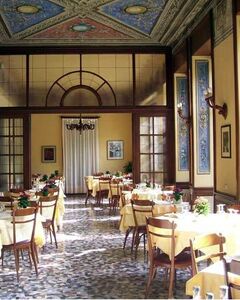
Our family-run hotel, is situated on the shores of Lake Como in Torno, offering superb views. Hotel Vapore offers our guests the opportunity to have breakfast outside on the terrace overlooking the lake, and has Wi-Fi free in public areas. The...

A triumph of scents, colours and mood that evoke the tradition of the territory with the incomparable pleasure of different flavours with a modern twist. The Restaurant "I Melograni" is located inside the Relais "La California". a wonderful oasis of...
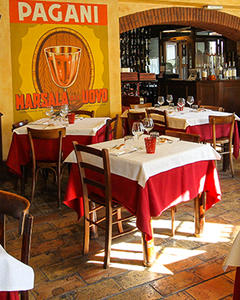
La Vetturina located in Oggiono in the province of Lecco, is the ideal place for those who want to spend an evening with friends eating a delicious dish of grilled meat and sipping a good Belgian beer. The kitchen also offers exquisite traditional...

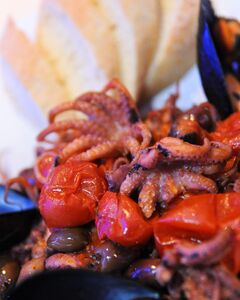
Traditional flavours of Mediterranean cuisine in a young and modern setting where daily arrivals, and careful selection always ensures freshness and quality of ingredients....
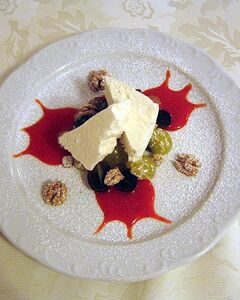
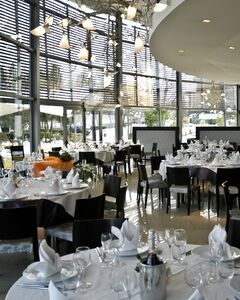
Magnificent example of contemporary architecture, characterized by a seductive minimalist design. The Restaurant Simposio is absorbed in the green of the pleasant Brianza. Every day at lunch is available a rich choice of unique dishes, while the...

Ideal place for special occasions, banquets, ceremonies or just to enjoy our menu of pasta dishes, fresh fish of the day and large succulent grilled meat cooked to Pariggia Argentina, all washed down with fine wine and kindness!Restaurant Molera is...
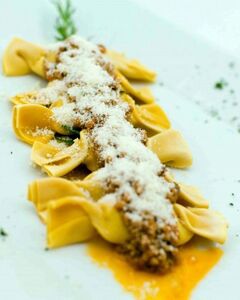
Restaurant Marion is a comfortable and friendly location based on a typical and regional cooking, since 1920. You will be welcomed in a modern and refined large room. An external terrace completes the structure. Restaurant Marion main dishes are...
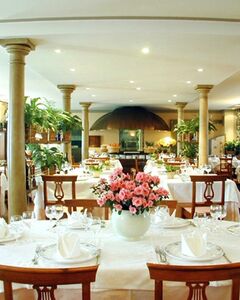
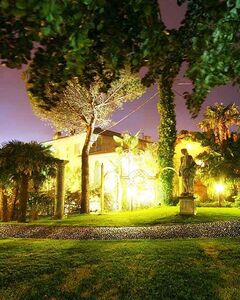
Enchanting countryside location for weddings. We will offer a buffet of welcome on our spacious covered terrace. You will find the secret garden and perfect for your photos. The restaurant features two large air-conditioned lounges divided only by...
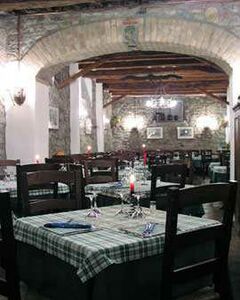
In our restaurant you can enjoy a variety of Italian and Spanish cuisine, with a wide choice of dishes from our à la carte menu, including themed menus Spanish, Italian or the more rustic medieval. It is also possible to have a particular menu for...

Tradition, authenticity, innovation. A new concept restaurant that, with the creativity of our Chef Stefano Binda and the pursuit of excellence in raw materials, creates an unprecedented taste experience—both sensory and cultural. A local eclectic...


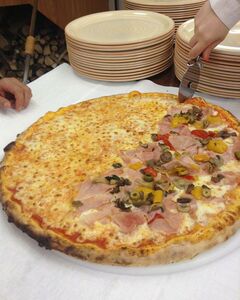
Features locally grown ingredients in traditionally based recipes. It will be with the recipes of our grandparents, but cooked with innovative methods and modern, that we can all delight our palates. even all the sweets that we will propose, today,...

Trattoria that combines the traditional menus of the Como area with the first fruits and seasonal products. Keep in mind that our menu is always changing. In addition to the proposed fresh pasta with chestnuts, cocoa, ragu 'game, pizzoccheri made...
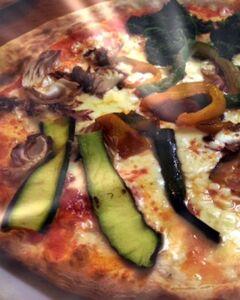
Flavors of the highest quality, comfortable and friendly atmosphere tones may alone be a great excuse to say "we arrive at Capolinea". We went over because we wanted to create an environment suitable for those who were to choose a location where a...
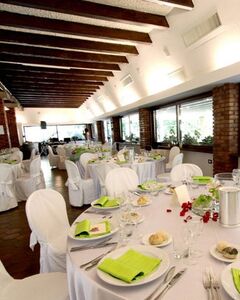
A versatile location in the absolute quiet of the countryside and surrounding woods provide complete relaxation and safe comfort. A beautiful setting combined with our professionalism and commitment, make Cassina Pelada the ideal place to celebrate...
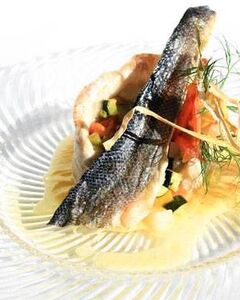
Zafferano Bistro Restaurant is a modern bistro. Inspired by the creative use of spices such as saffron, the Bistro is characterised by artfully combining traditional tastes with outstanding creative cooking. It caters for whom loves quality,...


A Mediterranean cuisine with a something more that just a talented Chef can give. The Restaurant Plinio 1988 essential and simple, but also comfortable and functional, it is a tangible sign of how, by combining the traditional Mediterranean cuisine...
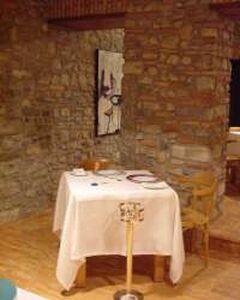
A corner of delight sheltered in the ancient heart of this little green town with rustic entrance and dining area that is now divided into two sections: the oldest is around the fireplace, between beautiful chairs of solid wood , some lovely...
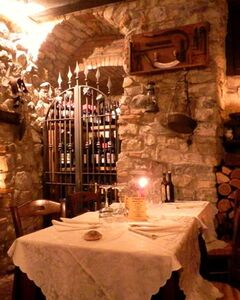
Albavilla, just a few kilometers from Lake Como, in the beautiful setting of mountains and lakes Brianza, you will find an elegant and cozy place to spend pleasant and relaxing moments, tasting a 'careful choice of traditional cuisine, accompanied...

If you have always thought that dinner at home rhymed with pizza, it's time to think again: in addition to the rich menu pizzeria, Al Sail Fish also offers an equally large restaurant menu. And all the dishes on the list may be requested to take...
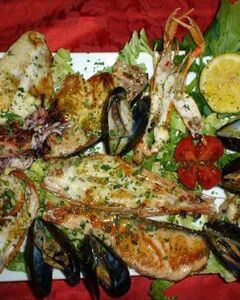
Affordable lunches in a charming “arched" setting. Diverse menu items that are sure to please anyone’s palette....
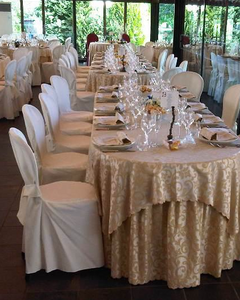
A splendid villa in the center of Annone di Brianza, the restaurant with its beautiful rooms, attention to detail, the elegance of the setting and the courtesy of the owners make the 'Antico Borgo della Madonnina the perfect place for any occasion...
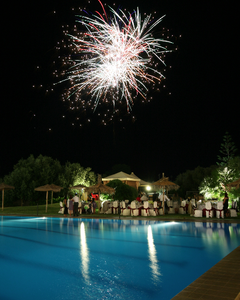
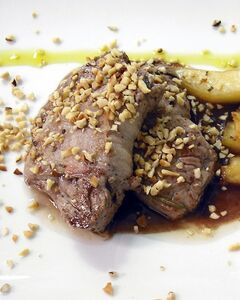

The first and only conservatory restaurant in Italy, the Navedano is to be found in a 19th century villa, concealed in a green oasis around the river Cosia, only a few minutes from the centre of Como. It is a hidden charming retreat, managed with...

In a relaxed and welcoming atmosphere, accentuated by the flame of the fireplace, we present traditional recipes, cuisine and seasonal specialties of meat on wood embers. Proposals for fresh fish are characterized by the search for natural flavors...

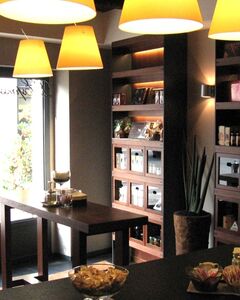
The history of the local is the combination of sight and taste. The attention to detail in decor, the high quality of products, the friendliness and professionalism of the staff, have as its ultimate goal, the intimate pleasure of a coffee or a...
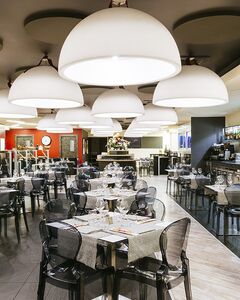
Cafe TimeOut is divided on two levels, one up-floor dedicated exclusively to Griglieria-Pizzeria-Restaurant, and one down-floor disco where live shows and live music. The restaurant offers traditional Italian dishes expertly revisited according to...
An outdoor museum focusing on Abstract Sculpture with an exhibition area of more than 120 acres. The Rossini Art Site resonates in many ways with its founder’s desire to create a flexible, friendly and enjoyable place for families. At RAS, kids can...
A guided tour that tells the story of the radio that will provide insight and memories from the olden days before flat screen TVs and the Internet....
A small museum housing artifacts, images and posters describing the history of granite processing in Novate Mezzola. Sanfedelino. For nearly two centuries, extracting granite from the Sanfedelino quarry, so called to recognize the martyr Fedele...
Ancient and modern printing, from mobile characters to computers is the theme of this museum. Here one can see antique-type lithographic presses, machines for the casting of the lead characters, the first cameras dating back from the end of...
Visit a century old mine and see the techniques employed to extract barite an important mineral used to refine sugar, in rubber, coated papers, pigments, glues, plastics and in protective materials against radiation. The material comes out the...
Educational science museum that was inaugurated in 1917 aiming at providing educational tools for teaching science in school. The room that hosts the museum is painted with frescos inspired by nature and displays images of all Nobel Laureates who...
A museum that aims to preserve and offer an account of country life in the late nineteenth and early twentieth century, documented by artifacts and various objects. The museum is located on two floors: the first one is set up as a home environment...
A series of sculptures and paintings of Italian and European artists, creating a veritable outdoor museum while respecting the area’s pristine landscape. The works have been created by various artists with the intent of both beautifying and...
The House Museum of Moggio was commissioned in 1991 by Maria Goretti who, donated the property to the parish with the stipulation that it be used to benefit the community. The Museum includes historical objects, old photographs, fossils and minerals...
Contains a collection of natural history (fossils, minerals, dioramas of animals and a butterfly collection), archaeological and ethno-anthropological material with a reconstruction of a "Casel ", the typical hut of Maggengo. It is the first local...
The Abegg silk museum is housed in a 17th century silk mill built by the lakeside in Garlate and surrounded by a mulberry grove. It shows discoveries, inventions and machines for silk production, from worm breeding to fabric. It hosts a rich...
The Civic Art Gallery is located at Villa Manzoni in Lecco and hosts a selection of works belonging to the Civic Museums of Lecco and counts four hundreds paintings and two thousands engravings, divided chronologically in thematic rooms. A very...
In 1818, Pietro Monti, came to Abbadia Lariana where he transformed an old building for felting wool into silk production. In 1869 he enlarged the building and he added a new one for the spinning of cocoons; the first of the two spinning machines...
Belgiojoso palace was built in the late 17th and early 18th centuries by the family Locatelli Valle Imagna. It was renovated in 1774 and sold to the principles Belgiojoso d'Este, from which it derives its current name. Since 1928, the palace has...
Built in 1905, the building housed the offices of the Land Registry, taxes and duties where the Lecco went to pay taxes until 1964--hence the name: Palace of Fears. It is now home to temporary exhibitions and the Section of Contemporary Art and...
Gallery space that promotes various forms of art to ordinary people, trying to combine accessibility and quality, local and universal dimension, past and present. If we want people to love culture we have to give them a reason to love it. During the...
In addition to its lavish gardens and picturesque position on the lake, Villa Monastero is also a house museum where a vast number of objects belonging to its several owners are displayed....
Thanks to Giambattista Sommariva the villa reached its greatest glory in the 18th century, being enriched by art masterpieces and becoming a museum. Sommariva was an art collector and bought the estate at the beginning of the century; he enhanced...
Villa Manzoni houses the Museum Manzoni, the Municipal Art Gallery and the Library specialized museums Villa Manzoni, is a neoclassical building, dating from the seventeenth century, in which the residential portion is structured around a porch with...
The Museum holds records of the local history, traditions and customs. Several natural environments are recreated complete with plants, animals, mushrooms fossils and dioramas relating to the local fauna. The museum also has documents about the...
In 1978 a group of friends of the Lake of Como founded an association called "The Collection of Boats of Lake Como" with the aim of saving the age-old and noble nautical traditions of their lake. The museum was opened in 1982 and it is fitted out in...
Positioned within the Grigne, at a height of 1300 m, the Piani Resinelli Mineral Museum Park is placed in a fascinating landscape. They are ancient mines, used from the 16° century up to now, and can today be visited in total safety. The guided...
The Palace was then the scene of memorable historical facts and today becomes the perfect setting for their commemoration museum. Thus it was born in Dongo the innovative Museum of the End of the War: a virtual tour and interactive in the depths of...
The Toy Horse Museum is the first and to date only museum in the world dedicated to the horse toy. The Museum is located in what was once the stables of the famous trotter Tornese that in the fifties was more times world champion. In 1969, the...
Our Museum: a voice which recounts to the future generations the importance of the events that took place in Dongo in April 1945. The last page of the WWII’s history was written here: the tragic tale of a war and a dictatorship which was responsible...
The Moto Guzzi Museum is located in Mandello del lario, Lake Como, the original birth place of the Moto Guzzi Eagle motorcycle established in 1921. See many other models representing milestones in the history of Italian motorcycling. Complete the...
This gem of a museum sits in a spectacular spot, adjacent to the chapel of the La Madonna del Ghisallo – patron saint of cycling – and 600 metres above Bellagio, offering spectacular views of Lake Como to the North and East. Together with the chapel...
More than two hundred navigational instruments are on display in this antique tower-shaped hous. Among the most interesting instruments in this private collection are a XVIII century telescope made in Venice, compasses and solar clocks of various...
The “Luigi Scanagatta" museum is of cultural and historical importance because of the number of birds specimens that was gathered throughout the years and its history. It was established in 1962 by professor Luigi Scanagatta, a well known...
The Volta Temple is a museum dedicated to Alessandro Volta, a prolific scientist and the inventor of the electrical battery. Volta was born in Como in 1745, held his first professorship there until 1779, and retired to Como in 1819. It is one of the...